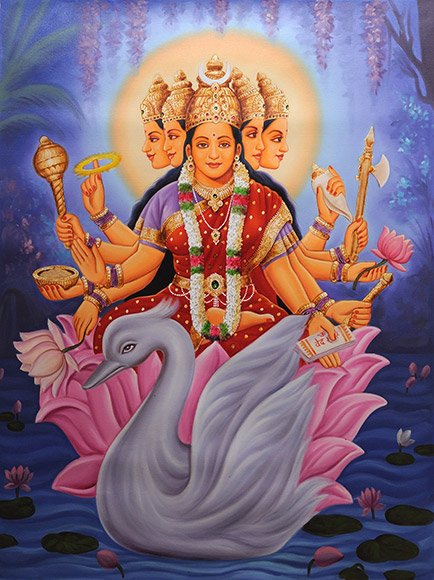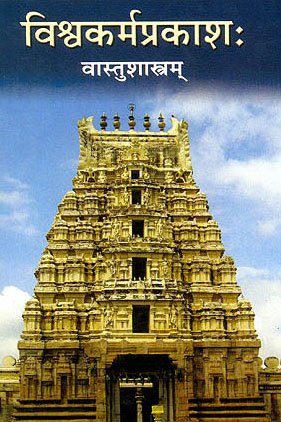Uddishta, Uddiṣṭa: 14 definitions
Introduction:
Uddishta means something in Hinduism, Sanskrit, Jainism, Prakrit, Marathi, Hindi. If you want to know the exact meaning, history, etymology or English translation of this term then check out the descriptions on this page. Add your comment or reference to a book if you want to contribute to this summary article.
The Sanskrit term Uddiṣṭa can be transliterated into English as Uddista or Uddishta, using the IAST transliteration scheme (?).
Alternative spellings of this word include Uddisht.
In Hinduism
Chandas (prosody, study of Sanskrit metres)
Source: Shodhganga: a concise history of Sanskrit Chanda literatureUddiṣṭa (उद्दिष्ट) refers to one of the six pratyayas mentioned in the Chandomañjarī 1.14.—The pratyayas are the cause of expansion of metres (chandas). Generally six pratyayas are found in Sanskrit prosody (e.g., Uddiṣṭa). But Mitrānanda advocates about nine types of pratyayas.

Chandas (छन्दस्) refers to Sanskrit prosody and represents one of the six Vedangas (auxiliary disciplines belonging to the study of the Vedas). The science of prosody (chandas-shastra) focusses on the study of the poetic meters such as the commonly known twenty-six metres mentioned by Pingalas.
Purana and Itihasa (epic history)
Source: archive.org: Shiva Purana - English TranslationUddiṣṭa (उद्दिष्ट) refers to “that which is conceived”, according to the Śivapurāṇa 2.3.17 (“The dialogue between Indra and Kāmadeva”).—Accordingly, as Brahmā said to Kāma: “O dear Kāma, you are competent to carry out the task which I have conceived in my mind [i.e., manasa-uddiṣṭa]. It cannot be realised through anyone else. O Kāma, foremost among my friends, listen. I shall explain truly for what I remembered you and desired your presence, O Kāma. Securing a wonderful boon from Brahmā, the great demon Tāraka has become invincible and a pest for everyone. [...]”.

The Purana (पुराण, purāṇas) refers to Sanskrit literature preserving ancient India’s vast cultural history, including historical legends, religious ceremonies, various arts and sciences. The eighteen mahapuranas total over 400,000 shlokas (metrical couplets) and date to at least several centuries BCE.
Vastushastra (architecture)
Source: Brill: Śaivism and the Tantric Traditions (architecture)Uddiṣṭa (उद्दिष्ट) refers to “(having been) taught”, according to the Mohacūrottara (verse 4.234-243).—Accordingly, [while describing the construction of the maṭha]—“[...] At a distance of 1½-times the previously given distance, and half that, as is suitable, is a single maṭhikā, in the form of a set of four awnings. The storeys are as have already been taught (uddiṣṭā—pūrvam uddiṣṭā). If money is lacking, a hut is approved. [...]”.

Vastushastra (वास्तुशास्त्र, vāstuśāstra) refers to the ancient Indian science (shastra) of architecture (vastu), dealing with topics such architecture, sculpture, town-building, fort building and various other constructions. Vastu also deals with the philosophy of the architectural relation with the cosmic universe.
Shaivism (Shaiva philosophy)
Source: SOAS University of London: Protective Rites in the Netra TantraUddiṣṭa (उद्दिष्ट) refers to “(that which is) described”, according to the Netratantra of Kṣemarāja: a Śaiva text from the 9th century in which Śiva (Bhairava) teaches Pārvatī topics such as metaphysics, cosmology, and soteriology.—Accordingly, [verse 2.22cd-28ab]—“From this authority, the seventy-million mantras arise. The terminal letter shining with various light, [which is the] split belly of the moon [j], is placed upon a hook [u], and yoked with the last rising horizon [i.e., the wind or last labial nasalization] [ṃ]. That which is described (uddiṣṭa—yat tat paramam uddiṣṭam) is celebrated in the world as the supreme Amṛta [sa], this is the highest dwelling place. [...]”.

Shaiva (शैव, śaiva) or Shaivism (śaivism) represents a tradition of Hinduism worshiping Shiva as the supreme being. Closely related to Shaktism, Shaiva literature includes a range of scriptures, including Tantras, while the root of this tradition may be traced back to the ancient Vedas.
In Jainism
General definition (in Jainism)
Source: The University of Sydney: A study of the Twelve ReflectionsUddiṣṭa (उद्दिष्ट) refers to “(being) described”, according to the 11th century Jñānārṇava, a treatise on Jain Yoga in roughly 2200 Sanskrit verses composed by Śubhacandra.—Accordingly, “Whatever objects, sentient and non-sentient, there are in the three worlds, they all are described by mendicants (uddiṣṭa—te te munibhir uddiṣṭāḥ) as continually transitory. The meeting of beloved women is like a city in the sky. Youth or wealth is like a mass of clouds. Relations, children and bodies, etc. are perishable as lightning. You must understand that the whole action of the cycle of rebirth is thus momentary”.
Synonyms: Kathita.

Jainism is an Indian religion of Dharma whose doctrine revolves around harmlessness (ahimsa) towards every living being. The two major branches (Digambara and Svetambara) of Jainism stimulate self-control (or, shramana, ‘self-reliance’) and spiritual development through a path of peace for the soul to progess to the ultimate goal.
Languages of India and abroad
Marathi-English dictionary
Source: DDSA: The Molesworth Marathi and English Dictionaryuddiṣṭa (उद्दिष्ट).—p S Designed, purposed, intended, meant. 2 Pointed out, described, specified, mentioned.
Marathi is an Indo-European language having over 70 million native speakers people in (predominantly) Maharashtra India. Marathi, like many other Indo-Aryan languages, evolved from early forms of Prakrit, which itself is a subset of Sanskrit, one of the most ancient languages of the world.
Sanskrit dictionary
Source: DDSA: The practical Sanskrit-English dictionaryUddiṣṭa (उद्दिष्ट).—p. p.
1) Mentioned, particularized, specially told.
2) Desired, wished for.
3) Explained, taught &c.
4) Renowned, famous; पलायनेन चोद्दिष्टाः प्राणान्रक्षामहे वयम् । एकेन बहवो भग्ना यशोनाशं गमिष्यति (palāyanena coddiṣṭāḥ prāṇānrakṣāmahe vayam | ekena bahavo bhagnā yaśonāśaṃ gamiṣyati) || Rām.6.66.27.
Source: Cologne Digital Sanskrit Dictionaries: Shabda-Sagara Sanskrit-English DictionaryUddiṣṭa (उद्दिष्ट).—mfn.
(-ṣṭaḥ-ṣṭā-ṣṭaṃ) 1. Mentioned, particularised, described. 2. Promised. E. ut before diś to show, affix kta.
Source: Cologne Digital Sanskrit Dictionaries: Monier-Williams Sanskrit-English Dictionary1) Uddiṣṭa (उद्दिष्ट):—[=ud-diṣṭa] [from ud-diś] mfn. mentioned, particularized
2) [v.s. ...] described
3) [v.s. ...] promised
4) [v.s. ...] n. a kind of time (in music).
Source: Cologne Digital Sanskrit Dictionaries: Yates Sanskrit-English DictionaryUddiṣṭa (उद्दिष्ट):—[uddi+ṣṭa] (ṣṭaḥ-ṣṭā-ṣṭaṃ) p. Described.
Source: DDSA: Paia-sadda-mahannavo; a comprehensive Prakrit Hindi dictionary (S)Uddiṣṭa (उद्दिष्ट) in the Sanskrit language is related to the Prakrit words: Uddiṭṭha, Uddiṭṭhā.
[Sanskrit to German]
Sanskrit, also spelled संस्कृतम् (saṃskṛtam), is an ancient language of India commonly seen as the grandmother of the Indo-European language family (even English!). Closely allied with Prakrit and Pali, Sanskrit is more exhaustive in both grammar and terms and has the most extensive collection of literature in the world, greatly surpassing its sister-languages Greek and Latin.
Hindi dictionary
Source: DDSA: A practical Hindi-English dictionaryUddiṣṭa (उद्दिष्ट) [Also spelled uddisht]:—(a) aimed at, directed; desired, intended for.
...
Kannada-English dictionary
Source: Alar: Kannada-English corpusUddiṣṭa (ಉದ್ದಿಷ್ಟ):—
1) [adjective] intended; aimed; that is desired or decided to be achieved.
2) [adjective] (law.) tending or attempting to establish a norm by the prescription of rules; normative.
--- OR ---
Uddiṣṭa (ಉದ್ದಿಷ್ಟ):—[noun] an aim; purpose; intention.
Kannada is a Dravidian language (as opposed to the Indo-European language family) mainly spoken in the southwestern region of India.
See also (Relevant definitions)
Starts with: Uddishtaka, Uddishtatyaga, Uddishtatyagapratima, Uddishtavirata.
Ends with: Anuddishta, Ekoddishta, Manasoddishta, Nabhoddishta, Samuddishta, Yathoddishta.
Full-text: Uddittha, Ekoddishta, Ekottishtam, Uddisht, Yathoddishta, Pratyaya, Samuddishta, Uddishtatyagapratima, Tyaga, Uddish, Kathita, Uddishtatyaga, Prastarashekhara, Ud, Pratima, Shamanabhutapratima, Chandobhaskara, Dish, Vrittaratnavali.
Relevant text
Search found 12 books and stories containing Uddishta, Ud-dishta, Ud-diṣṭa, Ud-dista, Uddiṣṭa, Uddista, Uddiṣṭā; (plurals include: Uddishtas, dishtas, diṣṭas, distas, Uddiṣṭas, Uddistas, Uddiṣṭās). You can also click to the full overview containing English textual excerpts. Below are direct links for the most relevant articles:
Brihad Bhagavatamrita (commentary) (by Śrī Śrīmad Bhaktivedānta Nārāyana Gosvāmī Mahārāja)
Verse 2.1.141 < [Chapter 1 - Vairāgya (renunciation)]
Verse 2.4.207 < [Chapter 4 - Vaikuṇṭha (the spiritual world)]
Vastu-shastra (1): Canons of Architecture (by D. N. Shukla)
(v) The character of the building aspect etc. (Patākādi-ṣaṭ-chandas) < [Chapter 6 - Fundamental Canons of Hindu Architecture]
(iv) The Six Canons of Hindu Architecture (Āyādi-ṣaḍvarga) < [Chapter 6 - Fundamental Canons of Hindu Architecture]
Shrimad Bhagavad-gita (by Narayana Gosvami)
Verse 2.45 < [Chapter 2 - Sāṅkhya-yoga (Yoga through distinguishing the Soul from the Body)]
Baudhayana Dharmasutra (by Georg Bühler)
Sahitya-kaumudi by Baladeva Vidyabhushana (by Gaurapada Dāsa)
Text 10.26 < [Chapter 10 - Ornaments of Meaning]
Bhajana-Rahasya (by Srila Bhaktivinoda Thakura Mahasaya)
Text 34 < [Chapter 2 - Dvitīya-yāma-sādhana (Prātaḥ-kālīya-bhajana)]